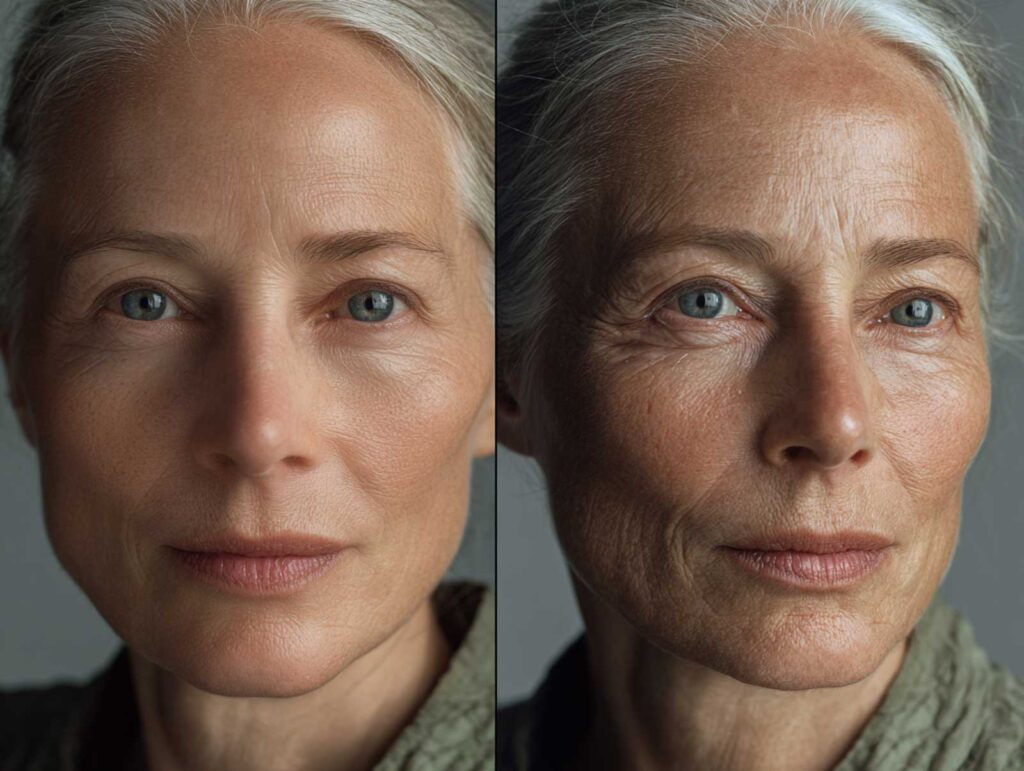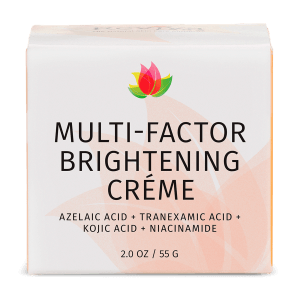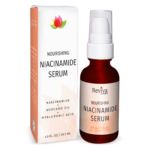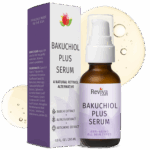Reviva Labs, Skin Care
How Bone and Fat Loss in the Face Changes with Age
Look in the mirror and you might spot a new crease. Something subtle, maybe a little hollowing around the eyes, or a cheekbone that doesn’t pop like it used to. These changes can feel sudden, but they’re part of a quiet shift happening beneath the skin’s surface: the gradual loss of bone and fat in the face.
It’s not just wrinkles or sun damage at work. The structure of your face is changing over time – and that shift can affect how youthful or tired you appear. But while many people focus on topical treatments or seek injections and surgery, there are powerful, science-backed ways to slow these shifts without needles or scalpels. Daily choices and habits matter, and they matter more than most people realize.
The Hidden Framework Beneath Your Skin
Your skin sits atop a scaffolding of bone, muscle, and fat. This framework gives your face its shape, angles, and lift. As we age, bone mass doesn’t just decrease in the spine or hips – it happens in the face too. The bones of the jaw, cheeks, and around the eyes shrink and recede. This is known as facial bone resorption. When combined with the loss of facial fat, especially in the mid-face and temples, people start to exhibit the classic signs of aging: sagging, hollowness, and deeper folds.
Researchers have found that facial bone resorption is a key factor in age-related facial changes. A study in Plastic and Reconstructive Surgery journal found that the angle of the jaw becomes more obtuse with age and that orbital bones widen and deepen, altering the position of the eye and brow. These shifts contribute to a more tired, sunken appearance. (Shaw et al., 2007)
Fat loss follows a similar pattern. Unlike body fat, facial fat is organized in compartments. With age, these compartments shrink or shift downward, leaving certain areas hollow while others look heavy. The balance of facial volume breaks down, making lines like the nasolabial folds around the nose and marionette lines at the corners of the mouth more visible.
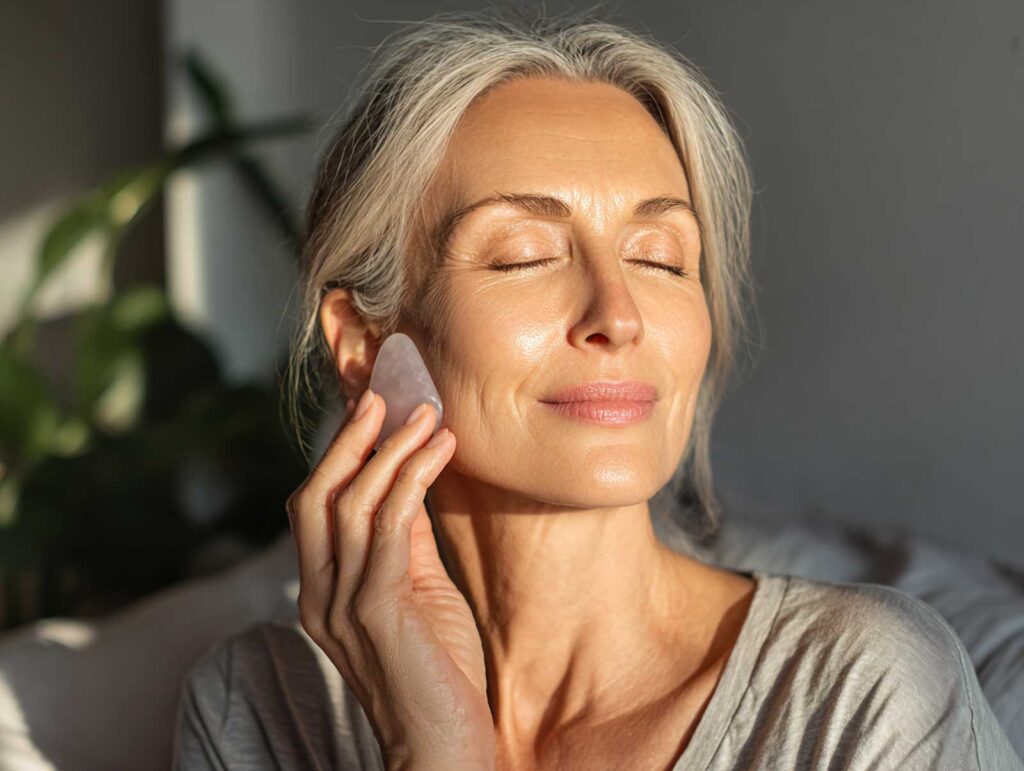
You Can’t Stop Time, But You Can Influence It
No topical cream will rebuild bone or replace lost fat, but daily habits can support the systems that influence both. The key is consistency. Supporting collagen, circulation, muscular tone, and even posture all play a role in preserving the structure of your face.
The face is not separate from the body – it responds to nutrition, exercise, inflammation, and stress just like everything else.
Start With the Basics – Nutrition for Bone and Fat Preservation
A nutrient-dense diet helps preserve facial volume in two critical ways: it supports bone mineral density and helps maintain the health of fat cells and connective tissue.
Calcium and vitamin D are essential for preventing bone loss, but they’re not enough on their own. Vitamin K2 plays a quiet but crucial role in directing calcium into the bones rather than soft tissues. Magnesium, zinc, and collagen-forming nutrients like vitamin C also contribute to the health of bones, cartilage, and skin.
Omega-3 fatty acids help reduce inflammation and may preserve the health of subcutaneous fat. A 2018 study published in The Journals of Gerontology linked higher omega-3 intake to reduced facial aging and better skin elasticity. Eat leafy greens, oily fish, seeds, nuts, eggs, and collagen-rich foods like bone broth or gelatin. Avoid excessive sugar and alcohol – both break down collagen and increase oxidative stress, which can speed up volume loss.
Facial Exercise
Facial muscles weaken over time. And when they lose tone, everything built on top of them – skin, fat, soft tissue – starts to shift downward.
Targeted facial exercises can help keep these muscles firm. A 2018 study from Northwestern University showed that participants who performed 30 minutes of facial exercises daily for 20 weeks experienced significant improvements in mid-face volume and upper cheek fullness.
Focus on exercises that lift and engage the cheeks, jawline, and brow. Think of it like strength training for your face. But consistency is key – random or occasional movements won’t produce results.
Support Collagen from the Inside Out
Collagen is the main structural protein in skin, ligaments, and bones. With age, our body produces less of it. Collagen loss contributes to skin sagging, but it also weakens the connection between facial fat pads and the underlying muscle.
Supplemental collagen peptides have been shown to improve skin elasticity and hydration. While they won’t rebuild lost volume, they may slow down the breakdown of supporting structures. Vitamin C enhances collagen synthesis, so pairing the two can be even more effective.
Bone broth, chicken skin, sardines (with bones), and collagen powder supplements are all options. These work best when paired with a healthy diet rich in nutrients that promote collagen production.
Facial Massage
Massage does more than relax the skin. It boosts blood flow, increases oxygen to cells, and supports the removal of waste through lymphatic drainage.
Better circulation means more nutrients get delivered to the skin and soft tissues. This may help maintain skin thickness, elasticity, and glow – especially as natural blood flow tends to decrease with age.
Daily facial massage using your hands or a tool like a gua sha stone can enhance tone and reduce puffiness. Aim for upward, lifting motions. Always use a facial oil or moisturizer to avoid tugging on the skin.
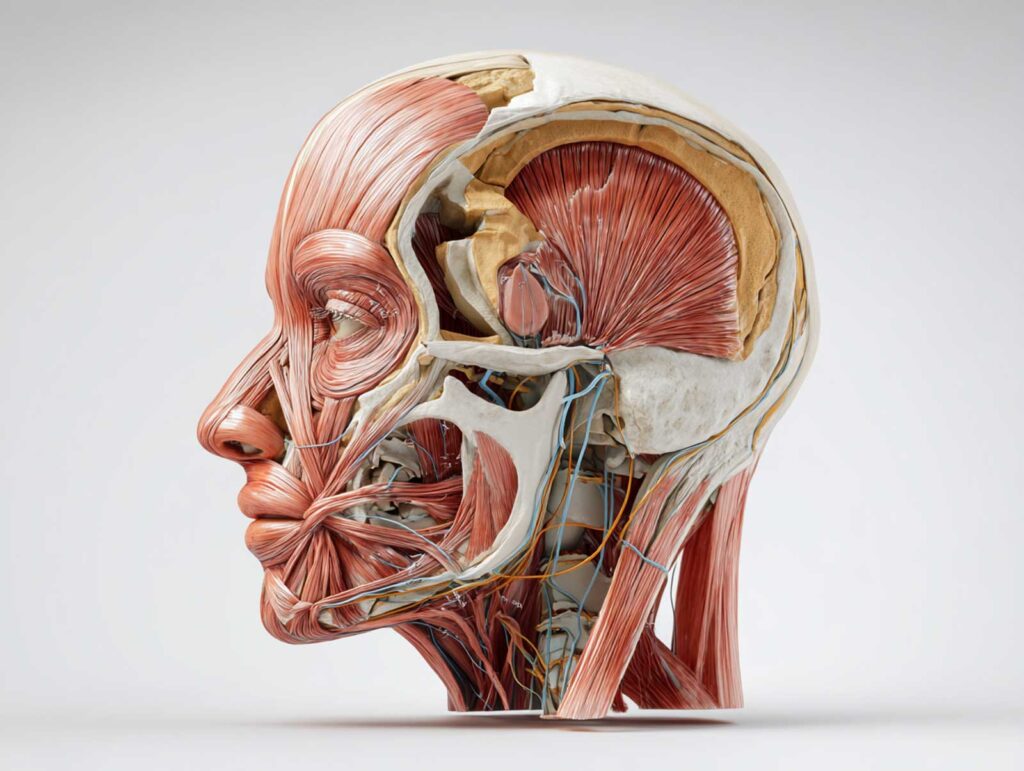
Posture and Alignment Matter More Than You Think
A forward head posture – common in people who spend hours looking at screens – can change the structure of your face over time. As the neck cranes forward and shoulders slump, the jawline blurs, the neck shortens, and tension builds in the lower face. This chronic tension can deepen nasolabial folds and marionette lines.
Incorporate posture exercises into your daily routine. Gentle neck stretches, shoulder rolls, and awareness practices like meditation or yoga can help reset your alignment. This won’t rebuild bone, but it helps preserve the lift and balance of facial structures.
Protect What You Have with Smart Skincare
Sun damage doesn’t just cause pigmentation – it accelerates collagen loss and degrades facial fat. UV rays penetrate deep into the skin, breaking down support structures beneath the surface.
Wearing sunscreen daily is a non-negotiable. Broad spectrum protection prevents photoaging, which contributes to both wrinkles and volume loss. Antioxidant-rich skincare – vitamin C, ferulic acid, niacinamide – can offer additional support by neutralizing free radicals that accelerate aging.
Hydrating ingredients like hyaluronic acid plump the skin and help maintain a youthful look, though they won’t change the deeper bone or fat layers. Still, skin that’s well-cared for reflects light better, holds structure longer, and appears smoother.
Stress Shows in the Face – Literally
Chronic stress increases cortisol, a hormone that contributes to fat redistribution, bone loss, and inflammation. In the face, this can translate into thinning, sagging, and deeper lines.
Simple mindfulness practices can counteract this. Meditation, deep breathing, walking in nature – even ten minutes a day can reduce cortisol levels. Sleep is also critical. During deep sleep, the body repairs tissues, balances hormones, and regenerates cells.
Aim for 7 to 9 hours per night, and avoid screens or harsh light for at least 30 minutes before bed. The quality of your sleep reflects directly in the resilience of your skin and muscles.
Weight Fluctuations Leave a Mark
Rapid or repeated weight loss can lead to fat loss in the face that doesn’t fully return. If you’re working on fitness or weight goals, aim for gradual, sustainable change. Yo-yo dieting often leads to long-term volume loss and a gaunt appearance in the face – even when the body looks healthy.
Preserve facial volume by staying hydrated, eating enough healthy fats, and incorporating strength training into your workouts to support muscle mass.
Hormones and Facial Volume
Estrogen helps maintain skin thickness, collagen, and fat distribution. As estrogen declines – especially after menopause – fat pads shift, bone loss accelerates, and the skin gets thinner and less elastic.
While hormone replacement therapy (HRT) may be a medical option for some women, others can support estrogen naturally with phytoestrogen-rich foods like flaxseeds, legumes, and whole soy. These don’t replace estrogen but may provide mild supportive effects.
Always consult a healthcare provider before making major changes related to hormone health.
The Power of Preventive Daily Habits
The structure of the face may change slowly, but it’s never too late – or too early – to support it. While you can’t stop facial bone or fat loss entirely, you can influence how quickly and how visibly it happens.
Small, consistent efforts add up. Feed your bones and tissues with real nutrients. Engage your facial muscles. Protect your skin. Be mindful of posture and stress. These habits aren’t dramatic, but they’re deeply effective over time.
According to a 2020 analysis in the British Journal of Dermatology, lifestyle factors such as diet, sleep, and UV exposure account for up to 40% of visible skin aging.
That’s a powerful number – because it means the face you’ll have in ten years depends not just on your genetics, but on what you do today.

